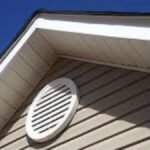GRE Testing Locations
Decided to take GRE exam? Now it is time to determine where to take the test. This site provides a full list of GRE testing centers in Dominican Republic, among which, you can choose one that is nearest to you. Good news is that the following GRE test locations in Dominican Republic offer both GRE general test and the GRE subject tests.
- SANTO DOMINGO, REPUBLICA DOM. – APCU-8336
Instituto Cultural Dominico-Americano (ICDA), Avenida Abraham Lincoln #21, Santo Domingo
Dominican Republic
Computer Based Test
GRE Test Dates
There are two types of test format offered by the test maker – ETS: Computer-delivered and Paper-delivered GRE general tests. For computer based test format, the GRE General Test is offered year-round on a continuous basis, and available for registration on a first-come, first-served basis. For paper based general test, testing is available three times per year. The following test dates apply:
| Test Dates for Paper Based | Deadlines for Registration | Scores Available |
|---|---|---|
| November 09, 2019 | October 4, 2019 | December 20, 2019 |
| February 1, 2020 | December 27, 2019 | March 13, 2020 |
GRE Subject Tests in Dominican Republic
The GRE Subject Tests are available on paper based only. In all GRE test centers throughout the world (both inside and outside United States), the exam is available three times a year. The three test dates are:
- April
- September
- October
More about Dominican Republic
Population
Mixed descendants of Europeans and indigenous peoples as well as indigenous people make up 58% of the population, 12.4% are mixed descendants of Europeans and Africans, 15.8% are black and 13.5% are white. The population density is 223 residents / km 2, the main settlements are the capital region with Santo Domingo and the Valle de Cibao with the cities of Santiago, La Vega and San Francisco.
On average, 81% (2017) of the population live in cities. Due to its long colonial history, the Dominican Republic is culturally Spanish. The colloquial and official language is Spanish, while Creole, of French origin, is widespread on the western border with Haiti. About 30% of Dominicans live below the poverty line; migration, especially to the US, is significant. Compared to neighboring Haiti, however, the standard of living is high. There are over 300,000 Haitian migrant workers – mostly illegally – in the Dominican Republic.
The biggest cities in the Dominican Republic
| Largest cities (population, last surveyed in 2010) | |
| Santo Domingo | 2,581,800 |
| Santiago de los Caballeros | 550 800 |
| Los Alcarrizos | 245 300 |
| La Romana | 224 900 |
| San Pedro de Macorís | 185 300 |
Social: Social insurance includes, among other things. Old-age, widow’s and disability pensions as well as health insurance. The quality and accessibility of state health facilities are often inadequate; On average, there are 1.6 hospital beds for every 1,000 residents.
Religion
The constitution guarantees freedom of religion. The majority of the population professes Christianity: according to the latest available estimates, around 48% of the population describe themselves as Catholic (two archdioceses with nine suffragan dioceses), around 21% belong to (post-) Reformation denominations (mainly evangelical, but also other Protestant Christians). There are also groups with references to Christianity such as Adventists, Mormons and Jehovah’s Witnesses. Non-Christian, small religious minorities are the Baha’is, Muslims and Jews (especially in Sosúa). The Afro-American religion of Voodoo and European Spiritism (Kardecism) are also widespread. 28% are not considered to be religiously bound.
Environment
Altitude and precipitation affect the plant environment, which is quite diversified. There are mainly tropical forests with precious essences (mahogany including the caoba, cedars, etc.) on the humid northern slopes of the mountain ranges and in the eastern regions, while on the internal reliefs the forest of Caribbean pines prevails and there is no lack of degraded lawn and land. used as pasture; in the more arid western and southern areas there is instead a very poor savannah, with cactiand other xerophilous formations. The clearing of forests to make way for coffee, cocoa, banana and sugar cane plantations and for the exploitation of timber, particularly intense from the 1960s to the 1980s, caused the loss of a large portion of the forest cover. which now covers just over a quarter of the country’s surface. Deforestation has also resulted in increased soil erosion; during the floods following hurricanes (2004) the mudslides and debris flows, in the absence of natural dams formed by the woods, overwhelmed thousands of homes. The local fauna includes numerous species of reptiles, in particular the Jaragua lizard (the smallest reptile in the world); birds, such as frigates, pelicans, herons, terns, Hispaniola parakeets, woodpeckers, crows, palm birds; land and marine mammals and fish. In addition to turtles, snakes, small quadrupeds that also populate the other islands of the Caribbean, humpback whales are present here in large quantities, which each winter make a journey of thousands of kilometers to reach the waters near the Samaná peninsula for courtship and reproduction. The numerous tourist facilities located on the coasts and the boats that cross these waters are a source of pollution and endanger the ecosystem of these and other marine animals. The 2000 law on protected areas provides for the promotion of the protection of natural areas of local interest and of the numerous parks (including 20 national) located in the Dominican Republic. Protected areas make up 20.8% of the country’s surface. The Jaragua-Bahoruco-Enriquillo area, declared a Biosphere and Lake Enriquillo Reserve, is part of the Ramsar project, the convention for wetlands of international interest.







